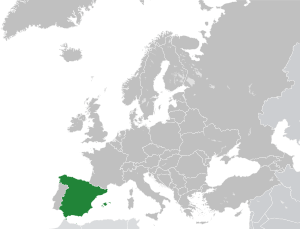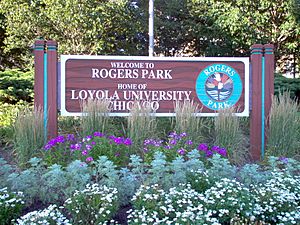Ecce Homo (statue) facts for kids

The Ecce Homo is a statue of Jesus of Nazareth. It shows him during his trial, after being captured by the Romans. The name "Ecce Homo" is Latin for "Behold the Man." This is what Pontius Pilate said about Jesus.
This statue is made from carved wood. It shows Jesus looking very sad and in pain. No one knows who made it, but people think it was carved in Spain around the year 1600. This was during the Baroque art period.
Baroque art often tried to create strong feelings. The artist wanted viewers to feel a deep connection with Jesus. For example, Jesus's skin is painted to show bruises. Small red glass beads were added to look like flowing blood. His face is carved to show deep sadness. The goal was to make people feel sympathy. This emotional connection was a way for Christians to worship.
Contents
What Does "Ecce Homo" Mean?
The phrase "Ecce Homo" comes from the Bible. It refers to Jesus's trial under Pontius Pilate. Pilate said "Behold the Man" to make fun of Jesus. This was because Jesus claimed to be divine.
The red cape and crown of thorns on Jesus also made fun of him. They were meant to mock his claim to be a king.
The Statue's Journey to Chicago
The Ecce Homo statue was given to the Loyola University Museum of Art (LUMA). A collector named Janet Relos donated it. Today, the statue is part of LUMA's Martin D'Arcy, S.J. Collection of Baroque Art.
Loyola University is a Jesuit school. The D'Arcy collection has both religious and non-religious art.
About the Loyola University Museum of Art
The Loyola University Museum of Art (LUMA) opened in 2005. Its goal is to show and celebrate spiritual art from all religions and cultures. LUMA has two main collections. One is the Martin D’Arcy, S.J. Collection of Baroque Art. The other is the Luma Collection, which has other types of art.
LUMA offers learning tools for students and the public. These tools help people discover and understand art from different faiths. The museum does not accept art donations without asking for them first.
History of the Statue
Art Rules from the Council of Trent
The Ecce Homo statue was likely made around the same time as the Council of Trent. This was an important meeting of the Catholic Church. It happened because of the Protestant Reformation. The Church made many changes to its rules.
One change was about how artists could show Jesus. If Jesus was shown in his last days, he had to be shown suffering. This rule was meant to make people feel more connected to his pain.
If the Ecce Homo statue was made under these rules, it means something important. It suggests the artist was a very religious Christian. It also means the statue was made for religious reasons, not just for art.


